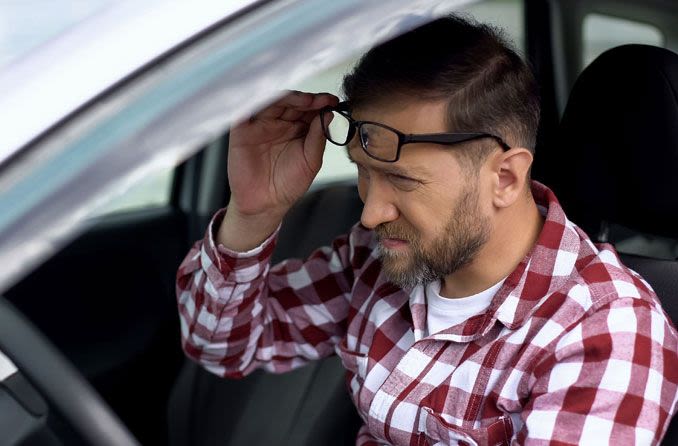Nearsightedness, shortsightedness and myopia: What do they mean?

What does shortsighted mean?
The word shortsighted is a common way to describe having myopia. Myopia is a refractive error that makes distant objects look blurry. Shortsighted people have difficulty seeing objects across the room. However, they can usually see nearby objects more easily.
If you have myopia, you may have trouble reading street signs or the numbers on a clock if they are far away. Distant objects look blurry, but nearby objects are usually clearer and easier to see. This is where the word shortsighted comes from.
In most cases, an eye becomes shortsighted when it grows too long from front to back. Shortsightedness can also occur when the shape of the cornea is too steep. In rare cases, it can be due to the position of the cornea and lens relative to each other.
Each of these factors can cause light to focus in front of the retina instead of directly on it. This is what causes distant objects to appear blurry.
Some shortsighted people only need prescription spectacles when they drive or watch television. However, many shortsighted people need to wear spectacles or contacts all the time. This depends on how severe the shortsightedness is. A myopia prescription of -6.00D is considered high.
In some parts of the world, shortsightedness is also known as nearsightedness. There is no difference between a nearsighted person and a shortsighted person.
There is currently no cure for shortsightedness. But fortunately, the blurry vision caused by shortsightedness can usually be corrected. Spectacles, contact lenses and refractive surgery are all effective ways to correct myopia.
Prescription spectacles are the most common method for correcting for myopia. Contact lenses are also a great option. They can correct nearly any level of shortsightedness.
Ortho-k contacts can temporarily correct myopia. They can also slow myopia progression in children.
LASIK and other refractive surgery procedures are only options after myopia has stabilized. For about 50 percent of people, this happens around age 15. Myopia stabilizes for almost everyone by age 24.
A growing problem
Myopia is very common, and it has grown much more common in recent years. More than 2.6 billion people worldwide now have myopia. In the U.S., more than 40 percent of the population is shortsighted.
If current trends continue, researchers estimate that half of the global population will have myopia by the year 2050.
Uncorrected or under corrected shortsightedness can sometimes lead to high myopia. High myopia is a major cause of permanent vision loss throughout the world. It can lead to retinal detachment, myopic macular degeneration and other vision-threatening conditions.
Early diagnosis can slow or even stop a child’s progressive myopia. To find out if your child is becoming shortsighted, schedule a comprehensive eye exam with an optometrist.
SEE RELATED: What is the difference between nearsightedness and farsightedness?
Borish's clinical refraction. Benjamin WJ & Borish IM. St. Louis Mo: Butterworth Heinemann/Elsevier. 2006.
World report on vision. World Health Organization. October 2019.
The impact of myopia and high myopia. Report of the Joint World Health Organization–Brien Holden Vision Institute Global Scientific Meeting on Myopia. 2017.
Myopia: A close look at efforts to turn back a growing problem. National Eye Institute. October 2017.
Myopia stabilization and associated factors among participants in the correction of myopia evaluation trial (COMET). Investigative Ophthalmology & Visual Science. December 2013.
Page published on Friday, 28 June 2019
Page updated on Tuesday, 28 March 2023
Medically reviewed on Tuesday, 8 February 2022






